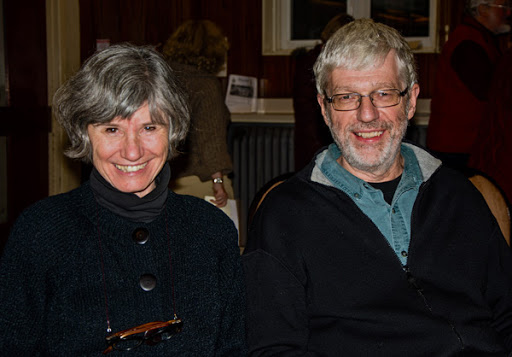Dark Fire: Discussion & Review
Dark Fire featured on American Truth
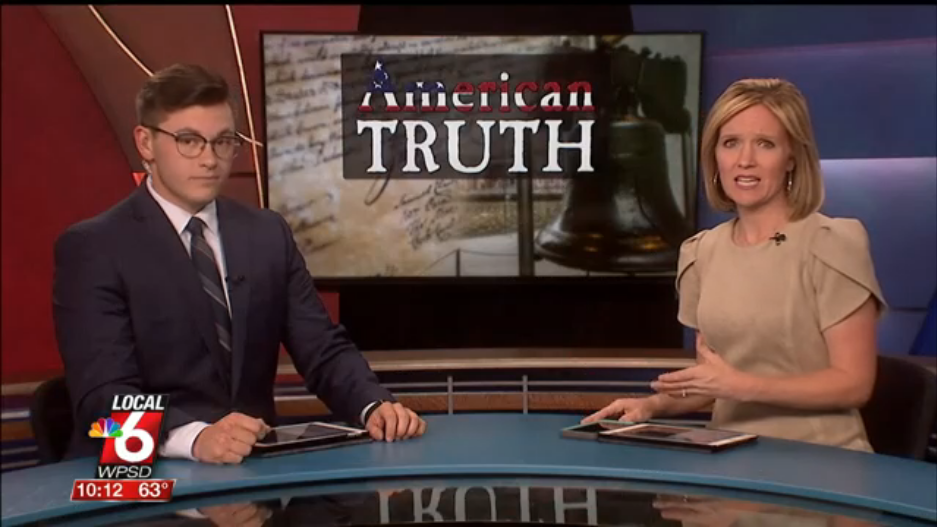
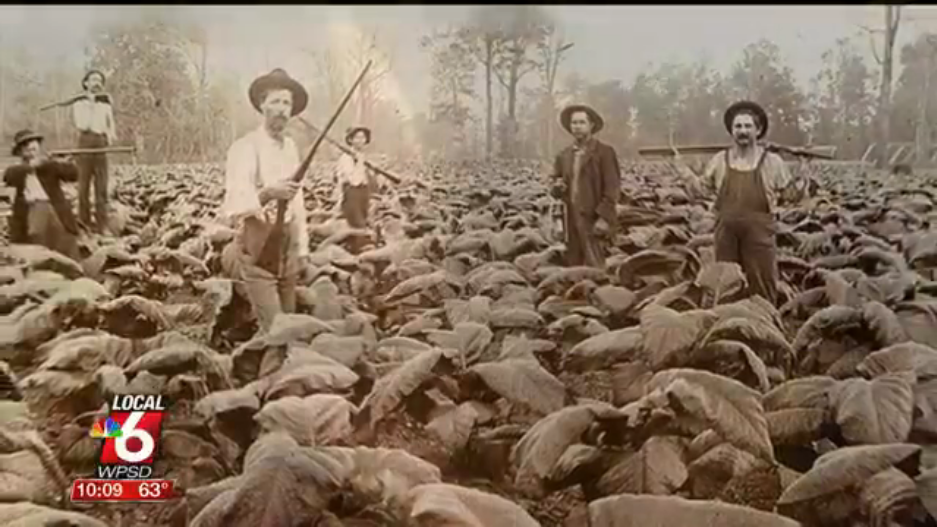
Dark Fire reviewed in the Hamilton Spectator
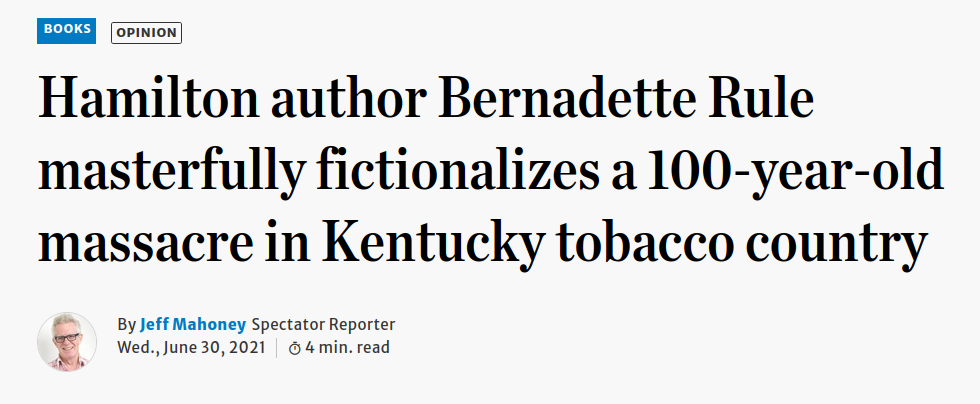
Despite being set a century ago in 1921, Dark Fire is a book for our times: a roar of outrage and beauty from the postwar twenties that resonates with the current blistering of vigilantism in America which recently peaked at the Capitol in January, 2021. The raw facts of this true story are shudderingly powerful: eleven members of two families, including seven children, are shot to death in a Kentucky farmhouse while celebrating a birthday, by a terrifying vigilante gang called The Night Riders. But place these raw realities in the hands of a masterful writer and they transcend fact, becoming families so real, so loved by you, the reader, that when you learn the details of their murders, you will weep.
In Dark Fire, Bernadette Rule resurrects from the vault of vanished days two ordinary farming families, common, and yet particularly beautiful in the details of their lives-being-led. Rule creates fascinating, tender portraits of these lovely families, infused with her burning determination to carve their lives, if not in stone, then in words, setting down what has happened here, not for justice—which is long past possible—but for some flicker of immortality to counterbalance the briefness of these families’ time in the world, to conjure a place for them in your heart, and to show you how quickly angry politics can flame into a dark fire that burns the living breath out of irreplaceable human beings. It is the most powerful book I've read in years.
- Janet Turpin Myers May 2021
Kenrick Chin investigating Dark Fire
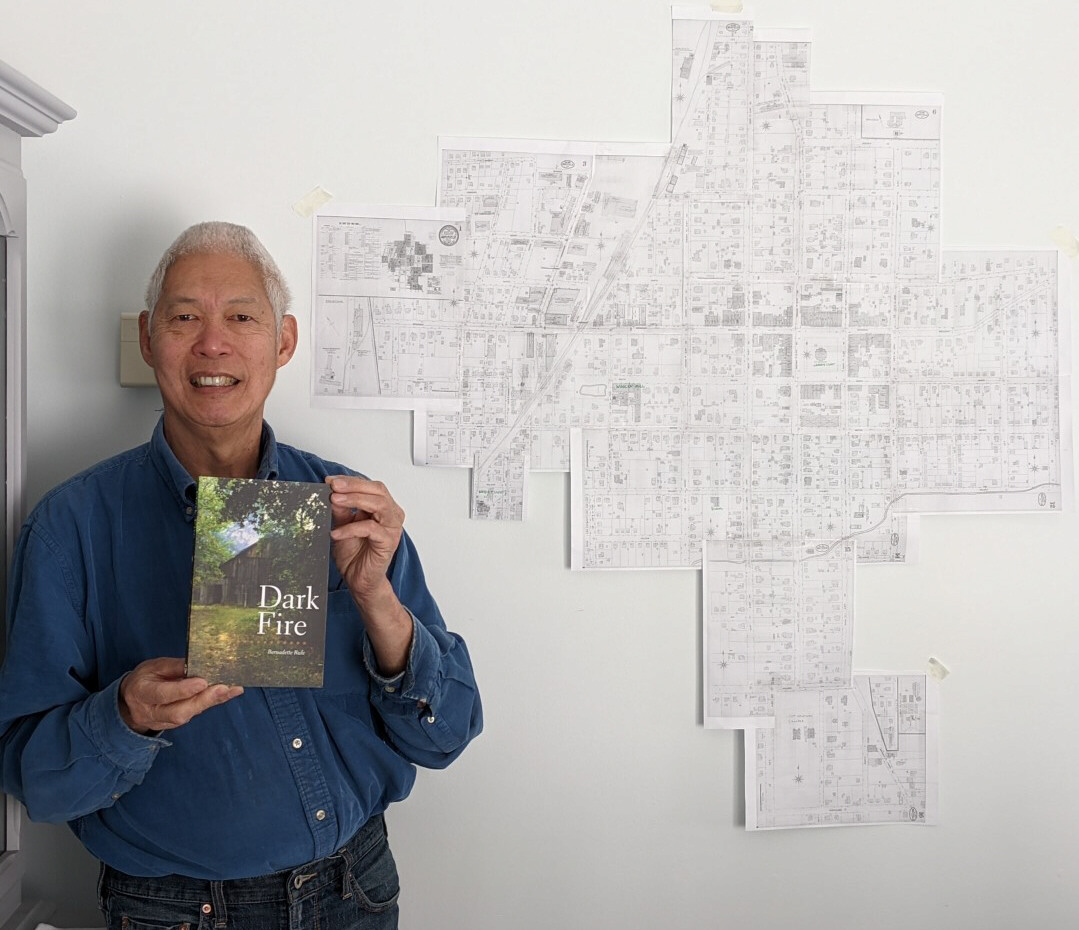
photo: Julie Byrne
Kenrick Chin, of the Engineering Physics Deptartment at McMaster University, became so immersed in Dark Fire that he went on line & printed off the Sanborn Fire Insurance Company maps of Mayfield from 1905, which Rule herself had used when researching the book. He recreated a map of the area on his study wall so he could follow along the roads and streets as he read.
Bernadette Rule reading from Dark Fire
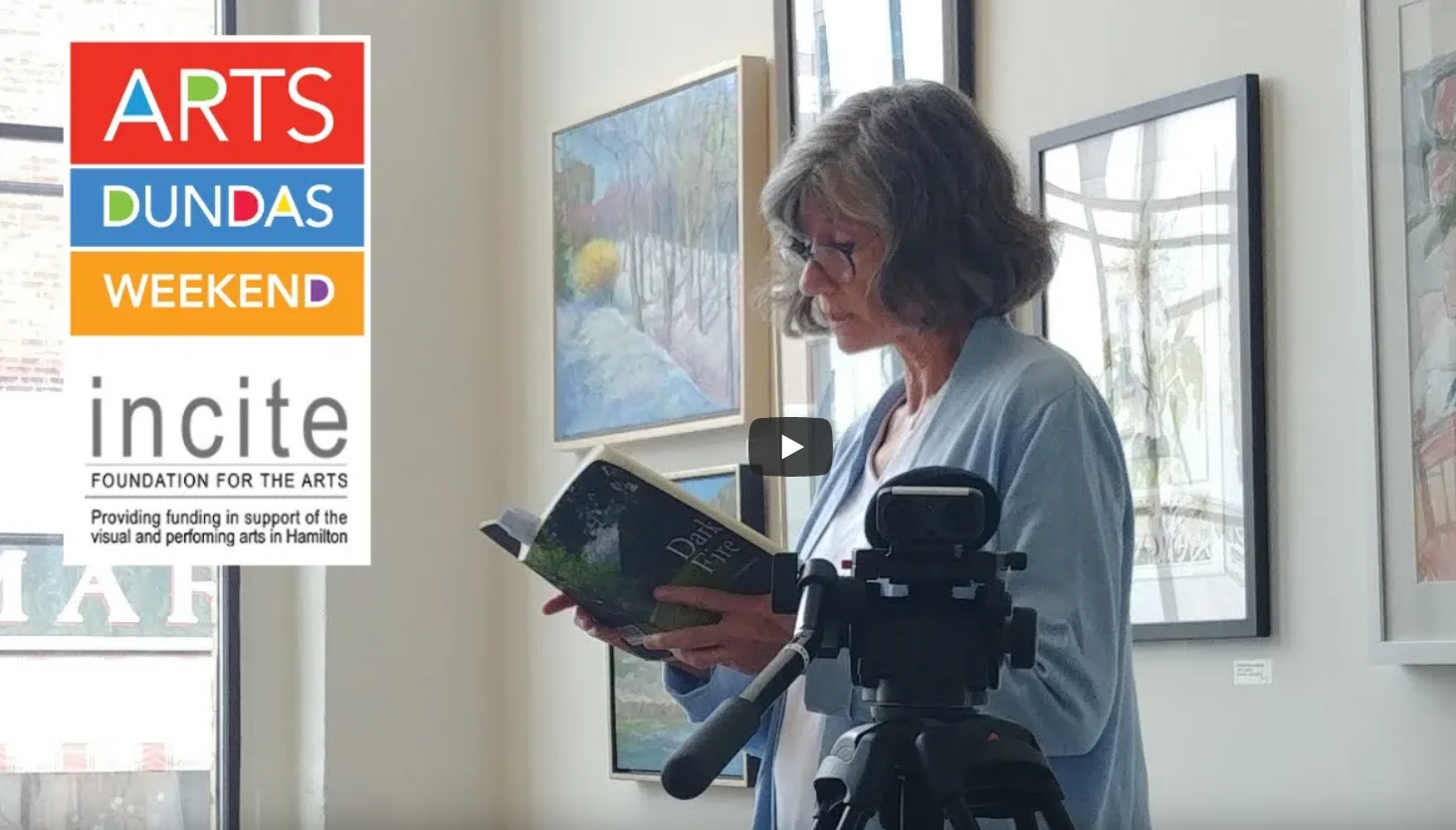
Dark Fire book trailer
Dark Fire burns so brightly I could not put it down and could not stop thinking about it. Bernadette Rule researched and wrote this book twenty-five years ago, and the long gestation led to a sharp, refined, perfectly fashioned and compelling account of a tragedy of primordial viciousness. This is storytelling at its best.
Dark Fire burns so brightly I could not put it down and could not stop thinking about it. Bernadette Rule researched and wrote this book twenty-five years ago, and the long gestation led to a sharp, refined, perfectly fashioned and compelling account of a tragedy of primordial viciousness. This is storytelling at its best.
The tale unfolds from the perspective of Pat Rule, our eight-year-old narrator. He is unbiased and brings a child’s innocence, telling the story in a calm voice that somehow emphasizes the horror we are anticipating. We find ourselves among the descendants of people who fled the potato famine in Ireland, relocated to Kentucky, took up subsistence tobacco growing, found themselves on different sides in the Civil War, and lost sons in the First World War. We meet unforgettable characters. Uncle Dave, freed from slavery, remembers what others have forgotten, and though blind, he tells people the history of their families, keeping track of each generation with a notch on his memory stick. Blackbird, known for his superstitious nature, advises on practical ways to avoid misfortune and walks about town with his matched terriers, Pete and Repeat. And Sammy Smythe, a perpetual candidate for public office, is a “slicked up, pig-faced man in a white suit.”
The scenes are richly set. We smell the sickeningly sweet tobacco blossoms and the wood fires used to cure the valuable leaves. We feel the fat green worms plucked from the underside of the tobacco leaves before we squeeze their heads off. We turn away from the stench of the sow’s blood spurting into the pan. We hear the horses whinnying, the mules hawing, and the rooster Hercules crowing at noon as bidden by Granny Rule. We can smell the inside of Uncle Berry’s grocery store and see the tinned goods neatly shelved across the aisle from the candy counter. We are treated to the sweet smell of a sleeping child as we are transported to rural Kentucky in the twenties.
The accents and turns of phrase signal how unique is this world where people get as jumpy as a long-tailed cat in a room full of rocking chairs. Shy of expressing their love out in the open didn’t mean it wasn’t there, “it was jist understood, like the air.” Things were left unsaid. “It was always parables and stories, and you was left to sort it through the best way you could.” When our narrator looks into a freshly dug grave, “I seen a drizzly image of myself” in a rain puddle. The grieving grandmothers’ eyes “looked like two holes burnt in a blanket, like they say.” The poetry of the language draws us deeper into the story.
The tobacco farmers join together to stand up to the tobacco merchants, hoping to force them to pay more for the cured leaves that require back-breaking labor. To succeed, the association requires all farmers to act in unison, withholding their tobacco until the merchants pay higher prices—“united we stand, divided we fall.” It is a loose movement ruled by high emotion but little discipline. To assert its power, the association forms the Night Riders. They wear their jackets inside out so they can’t be identified. Groups of them ride at night, confronting and intimidating those farmers and their wives who do not support the association—brutal violence reigns. After the Night Riders burn down the town’s tobacco chute, the National Guard is called in to restore order and permit trials of the Night Riders. The local judge is the brother of a prosperous tobacco merchant and the law sides with the merchants. Intimidated by the Night Riders, witnesses do not come forward, and the legal process is frustrated.
At first, the Night Riders are led by Ray Tibbs, a clever orator, and strategic thinker, but when he is jailed for contempt of court, leadership falls to the most extreme voices in mob-like meetings. The desperate farmers wrongly identify Ernest Lawrence as a traitor to their movement. In their irrational anger, a mob of Night Riders attacks the Lawrence home, shooting and hacking to death eleven members of the Lawrence and Drew families, including mothers, babies and children. The mob sets the home alight to cover up their crime.
We know from the Prologue how this saga will end, but the storytelling is so compelling we hungrily turn each page and come to know the victims in almost painful intimacy. When the inevitable attack occurs, the matter-of-fact description leaves nothing out but does not exaggerate or dramatize. The bare facts are enough— the stuff of nightmares.
Neighbors made donations to pay for the tombstone which marks the mass grave. It records that eleven members of the Lawrence and Drew families met a horrible death in the burning of the Lawrence home and cites it as “one of the unsolved mysteries.” Bernadette Rule has solved the mystery insofar as we now know who perpetrated the murders and why, but we do not get closure. The fact that the legal system utterly failed the victims and their families “relegates these deaths to the level of human sacrifice.” The community decided to move on and not inquire further. It could not explain to itself how such evil could dwell in the hearts of fellow citizens and manifest itself in the brutal murder of complete innocents. Rule concludes it is an example of human sacrifice comparable to rituals perpetrated in the jungles of the Amazon. Through the technique of creative nonfiction, Rule brings to life this true story which resonates long after the act of reading—as powerfully as the finest fiction.
This pager-turner broke my heart. The story is told from the perspectives of two characters: Ola, a courageous young tobacco farming wife and mother; and Pat, a spunky and good-natured school boy on the poor side of town. From their two sometimes overlapping worlds, we learn about life in 1920's Kentucky. As the story unfolds, the community of eccentric characters, the believable love between them, their struggles and hard work, compromises and triumphs, all weave together to create a world that I was happy to feel a part of when I read this book. The horrifying murder had me bawling and shaking. Reading this book is a powerful experience, and one which I highly recommend.
- Carys Rouleau
John Terpstra interviews Bernadette Rule
